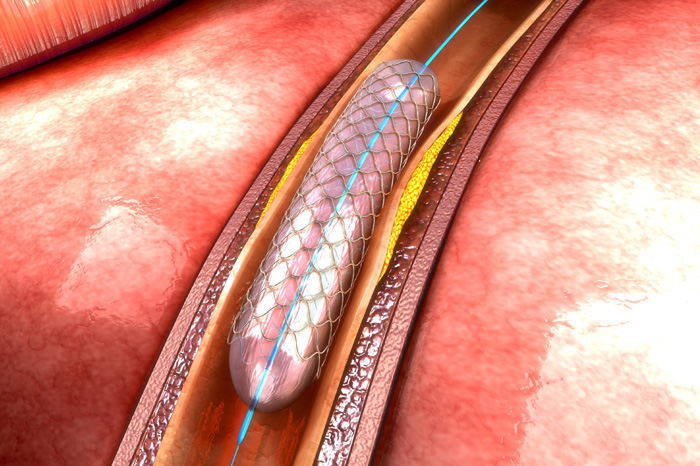A peripheral angiogram is a test that uses
X-rays and dye to help your doctor find narrowed or blocked areas in one
or more of the arteries that supply blood to your legs. The test is
also called a peripheral arteriogram.
Why do people have peripheral angiograms?
Doctors use a peripheral angiogram if they
think blood is not flowing well in the arteries leading to your legs or,
in rare cases, to your arms. The angiogram helps you and your doctor
decide if a surgical procedure is needed to open the blocked arteries.
Peripheral angioplasty is one such procedure. It uses a balloon catheter
to open the blocked artery from the inside. A stent, a small wire mesh
tube, is generally placed in the artery after angioplasty to help keep
it open. Bypass surgery is another procedure. It re-routes blood around
the blocked arteries.
What are the risks of peripheral angiograms?
Serious risks and complications from peripheral angiograms are very unlikely. But in rare cases:
- A thin tube (catheter) that doctors insert into your artery during a peripheral angiogram damages the artery.
- Some people may
have allergic reactions to the dye used in the test. Tell your doctor if
you have ever had an allergic reaction to x-ray contrast dye or to
iodine substances.
How do I prepare for a peripheral angiogram?
- Your doctor will give you instructions about what you can eat or drink during the 24 hours before the test.
- Usually you'll be asked not to eat or drink anything for 6 to 8 hours before your peripheral angiogram.
- Tell
your doctor about any medicines (including over-the-counter, herbs and
vitamins) you take. He or she may ask you not to take them before your
test. Don't stop taking your medicines until your doctor tells you to.
- Tell
your doctor or nurse if you are allergic to anything, especially
iodine, latex or rubber products, medicines like penicillin, or X-ray
dye.
- Leave all of your jewelry at home.
- Arrange for someone to drive you home after your angiogram.

